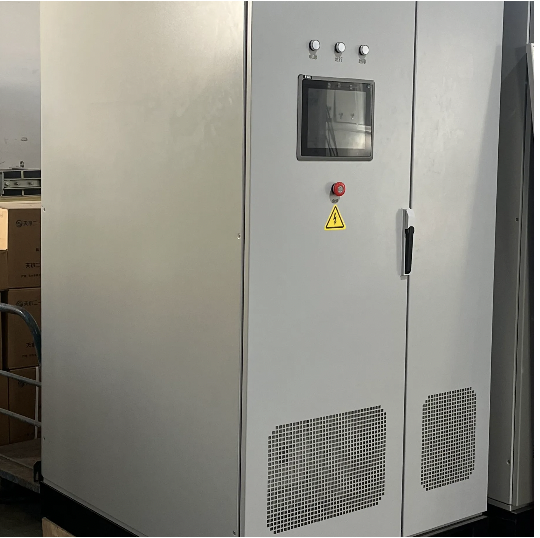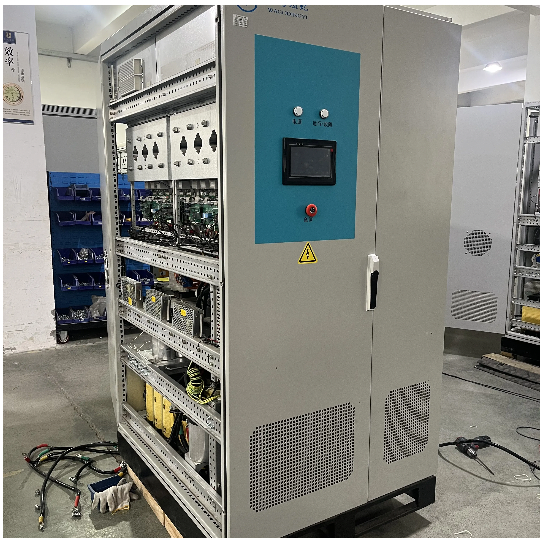Forståelse af den kritiske rolle, som vekselstrømforsyninger spiller i dagens teknologi
Variable strømforsyninger de tjener som rygsøjle i moderne elektriske og elektroniske systemer, og giver den nødvendige omdannelse og regulering af elektrisk energi, der holder vores verden i gang. Disse avancerede enheder har udviklet sig betydeligt fra deres tidlige iterationer, og er blevet mere komplekse og i stand til at opfylde de krævende strømkrav i moderne teknologi. I dagens sammenkoblede verden, Variable strømforsyninger udfører flere kritiske funktioner, som sikrer en pålidelig drift af alt fra industriudstyr til følsomme elektroniske enheder.

Kernefunktionalitet i moderne vekselstrømsforsyninger
Spændingsomdannelse og regulering
En af de primære funktioner i en vekselstrømsforsyning er at omforme og regulere spændingsniveauer. I moderne systemer indebærer denne proces at tage den standardmæssige netspænding (typisk 120 V eller 240 V vekselstrøm) og konvertere den til de specifikke spændingsniveauer, som kræves af forskellige enheder og komponenter. Vekselstrømsforsyningen opretholder en stabil udgangsspænding, selv ved svingninger i indgangsspændingen eller belastningsforhold, og sikrer derved en jævn og pålidelig strømforsyning til tilsluttede udstyr.
Avancerede spændningsreguleringsfunktioner omfatter automatisk spændningsstabilisering, som beskytter følsomme udstyr mod skader forårsaget af pludselige spændingsspidser eller -fald. Denne funktion er især afgørende i områder med ustabile strømforsyning eller i industrielle miljøer, hvor strømkvaliteten kan være ujævn.
Effektfaktorkorrektion og effektivitet
Moderne vekselstrømsforsyninger indeholder sofistikerede kredsløb til effektfaktorkorrektion (PFC), som optimerer forholdet mellem spændings- og strømbølgeformer. Denne korrektion forbedrer hele systemets effektivitet og reducerer belastningen på strømforsyningsnettet. Højkvalitets vekselstrømsforsyninger kan opnå effektfaktorer tæt på én, hvilket minimerer energispild og reducerer driftsomkostninger.
Energioptimering er blevet en afgørende faktor i designet af strømforsyninger, hvor moderne enheder opnår en omdannelseseffektivitet på over 90 %. Denne høje effektivitet betyder mindre varmeproduktion, lavere energiudgifter og forbedret pålidelighed af strømforsyningssystemet.
Beskyttelses- og sikkerhedsfunktioner
Overstrøm- og over spændingsbeskyttelse
Moderne vekselstrømsforsyninger indeholder flere beskyttelseslag, som sikrer både selve strømforsyningen og de tilsluttede enheder. Overstrømsbeskyttelsen forhindrer skader forårsaget af for stor strømforbrug, mens over spændingsbeskyttelsen beskytter mod farlige spændingsudsving, som kan skade følsomme komponenter.
Disse beskyttelsessystemer indeholder ofte avancerede overvågningskredse, som kan registrere unormale forhold og reagere inden for millisekunder, enten ved at slukke for strømforsyningen eller ved at aktivere beskyttelsesforanstaltninger for at sikre en sikker drift.
Termisk styring og miljøbeskyttelse
Temperaturmåling og termisk styring er afgørende funktioner i moderne vekselstrømsforsyninger. Avancerede kølesystemer, herunder variabelhastighedsventilatorer og køleplader, sikrer optimale driftstemperaturer under varierende belastningsforhold. Miljøbeskyttelsesfunktioner beskytter mod støv, fugt og andre forureninger, som kunne påvirke ydelse eller pålidelighed.
Mange moderne vekselstrømsforsyninger indeholder også intelligente termiske styringssystemer, som justerer køleparametrene baseret på temperaturmålinger og belastningsforhold i realtid, hvilket optimerer effektiviteten og sikrer pålidelig drift.
Kommunikations- og styrefunktioner
Integration af digital grænseflade
Moderne vekselstrømsforsyninger er ofte udstyret med avancerede digitale grænseflader, der muliggør fjernovervågning og -styring. Disse grænseflader giver systemadministratorer mulighed for at justere strømparametre, overvåge ydelsesmål og modtage advarsler om potentielle problemer. Integrationen af kommunikationsprotokoller såsom MODBUS, CAN eller ethernet muliggør en sømløs indarbejdelse i bredere systemstyringsrammer.
Digitale styresystemer muliggør også præcis justering af udgangsparametre og giver detaljerede ydelsesdata til systemoptimering og planlægning af forbyggende vedligeholdelse.
Kompatibilitet med intelligente net
Når strømforsyningsnet bliver mere intelligente, udvikler vekselstrømsforsyninger sig for at understøtte smart grid-funktionalitet. Dette omfatter funktioner såsom dynamisk belastningsjustering, overvågning af strømkvalitet og evnen til at deltage i programmer for efterspørgselsrespons. Avancerede vekselstrømsforsyninger kan kommunikere med netstyringssystemer for at optimere strømforbruget og bidrage til den overordnede netstabilitet.
Integration af smart grid-funktioner tillader organisationer at deltage i energistyringsprogrammer, hvilket potentielt kan reducere omkostninger og forbedre bæredygtighed gennem mere effektiv strømforbrug.
Pålidelighed og vedligeholdelsesfunktioner
Forudsigende vedligeholdelseskapaciteter
Moderne vekselstrømsforsyninger indeholder sofistikerede overvågningssystemer, der registrerer nøglepræstationsindikatorer og komponenters tilstand. Disse systemer kan forudsige potentielle fejl, før de opstår, og muliggør dermed proaktiv vedligeholdelse og minimerer uventet nedetid. Ved at overvåge parametre som temperatur, strømforbrug og komponentpåvirkning i realtid fås værdifulde indsigt i systemets tilstand.
Avancerede diagnosticeringsfunktioner hjælper vedligeholdelsesteam med hurtigt at identificere og håndtere potentielle problemer, hvilket reducerer reparationstider og sikrer optimal systemydelse.
Redundans og fejl tolerance
Kritiske installationer kræver ofte en uafbrudt strømforsyning, hvilket fører til implementeringen af redundante vekselstrømsforsyningssystemer. Moderne designs indeholder funktioner som udskiftelige moduler, muligheden for parallel drift og automatisk fejlomløb for at sikre uafbrudt drift, selv i tilfælde af komponentfejl.
Redundante systemer indeholder ofte belastningsdelingsfunktioner, som fordeler strømbehovet over flere enheder, hvilket forbedrer systemets samlede pålidelighed og forlænger komponentlevetiden.
Ofte stillede spørgsmål
Hvordan opretholder en vekselstrømsforsyning en stabil udgangsspænding?
En vekselstrømsforsyning opretholder en stabil udgangsspænding gennem en kombination af avancerede spændingsreguleringskredse, feedback-mekanismer og effektfaktorkorrektion. Disse systemer overvåger kontinuerligt udgangsspændingen og foretager i realtid justeringer for at kompensere for variationer i indgangsspænding eller belastningsforhold og sikrer dermed en konstant strømforsyning til tilsluttede udstyr.
Hvad gør moderne vekselstrømsforsyninger mere effektive end ældre modeller?
Moderne vekselstrømsforsyninger opnår højere effektivitet gennem avancerede kredsløb til effektfaktorkorrektion, forbedret komponentdesign og sofistikerede styresystemer. De anvender komponenter af høj kvalitet, avancerede bryderteknologier og intelligente energistyringsfunktioner, som minimerer energitab under strømomdannelse og -distribution.
Hvordan bidrager vekselstrømsforsyninger til udstyrsbeskyttelse?
Vekselstrømsforsyninger beskytter udstyr gennem flere integrerede sikkerhedsfunktioner, herunder beskyttelse mod overstrøm, beskyttelse mod over spænding og termiske managementsystemer. De indeholder også filtre til at eliminere støj på strømledningerne og beskyttelse mod spændingsspidser, som sikrer den sikre og pålidelige drift af tilsluttede enheder.



